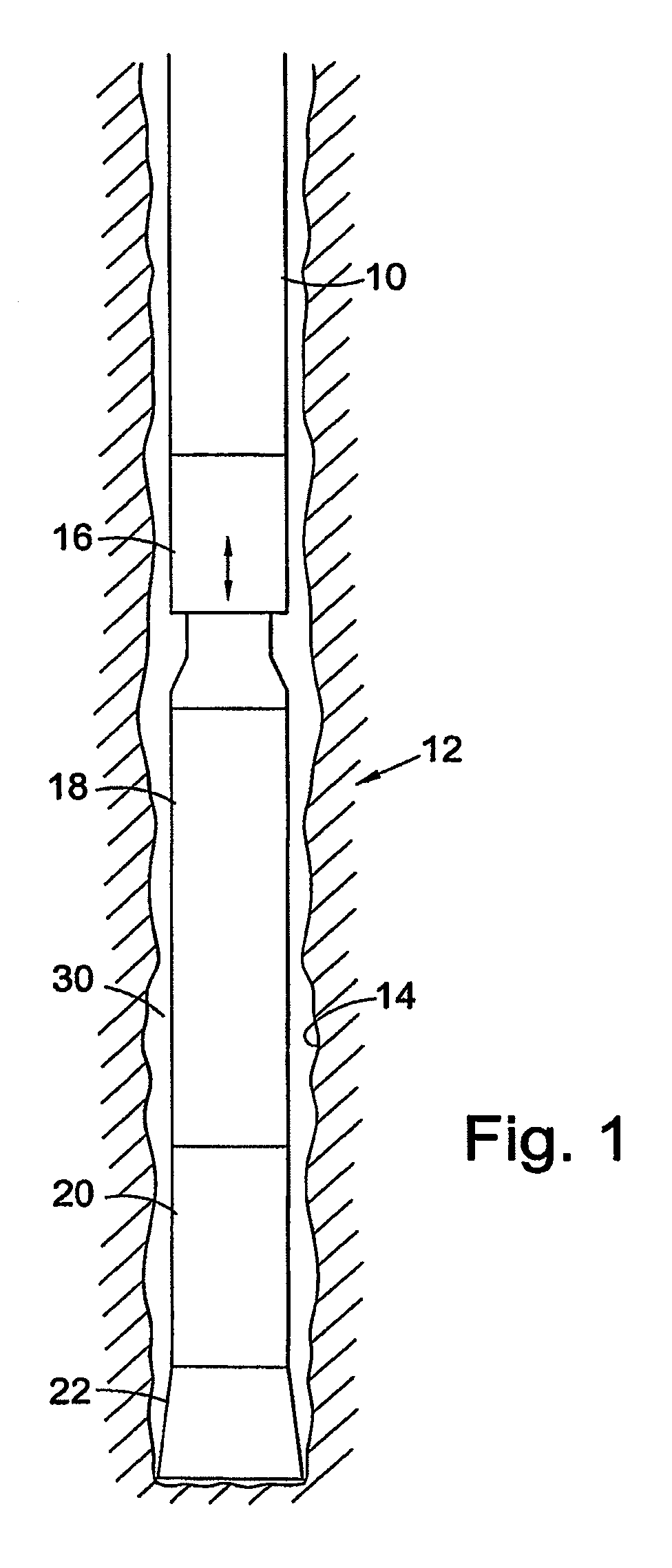Running and Cement Tubing
a cement tubing and running technology, applied in the field of running and cement tubing, can solve the problems of difficult to apply the torque necessary to rotate the string from the surface, and the friction between the string and the bore wall is difficult to reduce. the effect of friction
- Summary
- Abstract
- Description
- Claims
- Application Information
AI Technical Summary
Benefits of technology
Problems solved by technology
Method used
Image
Examples
Embodiment Construction
[0028]Reference is first made to FIG. 1 of the drawings, which illustrates the leading end of a string of bore-lining tubing 10 incorporating apparatus 12 in accordance with an embodiment of the present invention. In particular, the tubing is in the form of liner 10 intended to form the last lined section of a drilled bore 14 which has been drilled from surface to intersect a hydrocarbon-bearing formation. In this embodiment the liner has a solid wall, but other embodiments of the invention may involve use of slotted or otherwise perforated tubing.
[0029]The apparatus 12 comprises a shock sub 16, an agitator 18, a downhole motor 20 and a drill bit 22 and, as will be described, is used to facilitate running the liner string 10 into the bore 14 and then cementing the liner string 10 in the bore.
[0030]The drill bit 22 and downhole motor 20 are substantially conventional and are used in this embodiment to clear obstructions from the bore 14 as the string 10 is advanced through the bore. ...
PUM
 Login to View More
Login to View More Abstract
Description
Claims
Application Information
 Login to View More
Login to View More - R&D
- Intellectual Property
- Life Sciences
- Materials
- Tech Scout
- Unparalleled Data Quality
- Higher Quality Content
- 60% Fewer Hallucinations
Browse by: Latest US Patents, China's latest patents, Technical Efficacy Thesaurus, Application Domain, Technology Topic, Popular Technical Reports.
© 2025 PatSnap. All rights reserved.Legal|Privacy policy|Modern Slavery Act Transparency Statement|Sitemap|About US| Contact US: help@patsnap.com



